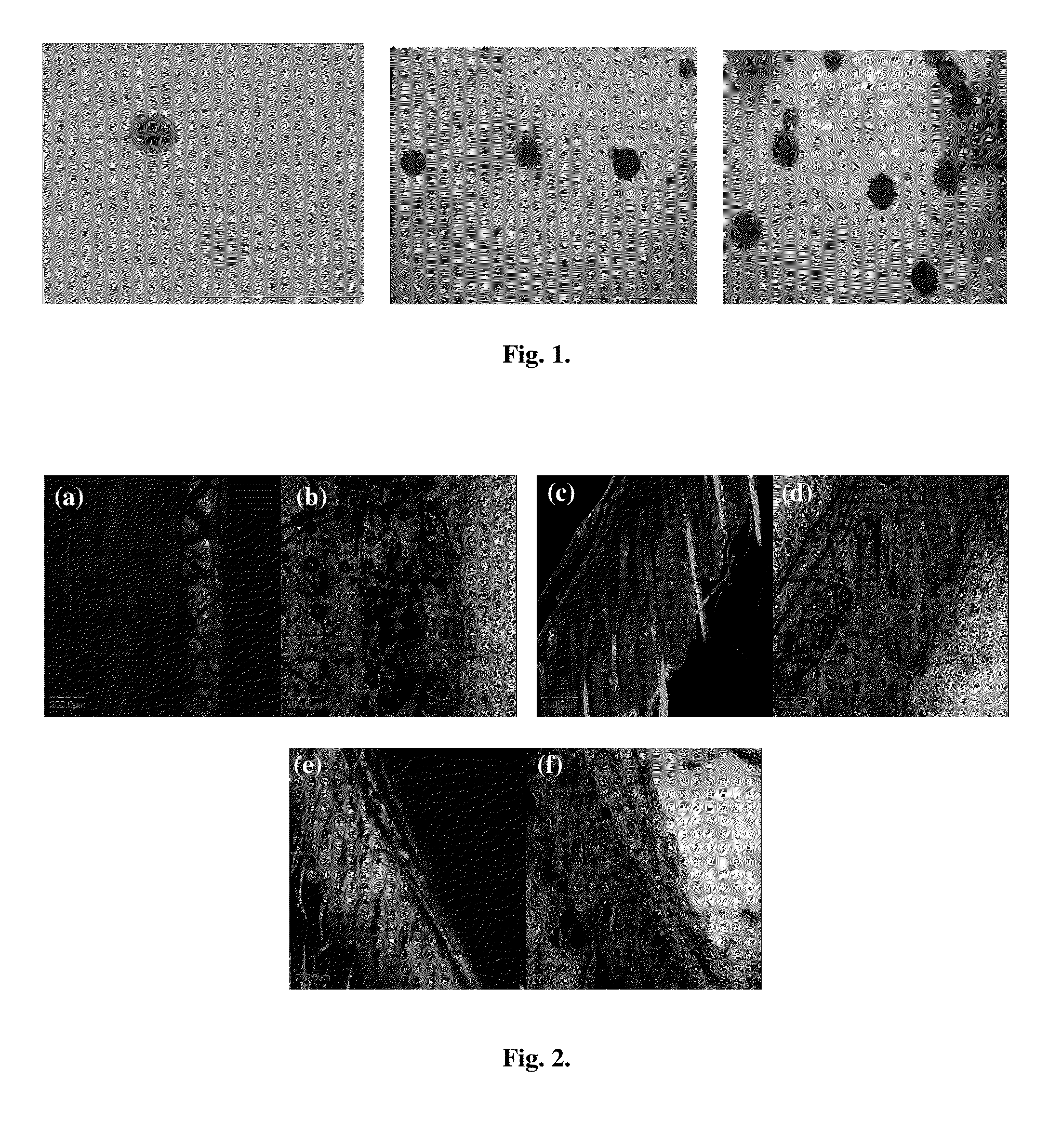Nanoparticle based cosmetic composition
a technology of nanoparticles and cosmetics, applied in the field of lipid-based cosmetics and dermatological nanoparticulate compositions, can solve the problems of many health hazards, inability to take supplementation in the form of ferrous sulphate, and neural tube defects in newborns
- Summary
- Abstract
- Description
- Claims
- Application Information
AI Technical Summary
Benefits of technology
Problems solved by technology
Method used
Image
Examples
example 1
Preparation of Liposomes
[0047]Liposomes of folic acid (FA) were prepared by the thin film hydration method. Briefly lipids, soya phosphatidylcholine:oleic acid SPC:OA in mass ratio of 9:1 (w / w) was dissolved in methanol / chloroform (1:2 v / v) in a round bottom flask, and was dried to a thin lipid film in a rotary evaporator at 40° C. under vacuum. The dry film was hydrated with fresh solution of folic acid in phosphate buffer saline (2 mg / ml, pH 7.4) in a rotary evaporator at 45° C. for 1 h with a rotation speed of 150 rpm to form multi-lamellar vesicles. The final lipid concentration was 4 mg / ml. The suspension was centrifuged at 25000 g, 4° C. for 45 minutes and the pellet was reconstituted in supernatant to achieve final concentration of lipid as 20 mg / ml. The resultant liposomal suspension was sonicated for two cycles of 1 min period with 1 s on, 1 s off intervals at 30% amplitude interrupted by a 2 min resting period at 25° C. using a probe sonicator resulting in a translucent aq...
example 2
[0048]The particle size distribution of folic acid loaded liposomes was determined after appropriate dilution of the liposomal dispersion with saline and reading carried out at 90° with respect to the incident beam by dynamic laser scattering (DLS) using laser particle analyzer at 25° C. Folic acid liposomes of 170 to 300 nm were prepared. The nanosized vesicles are incorporated within cosmetics.
TABLE 1Effect of increasing lipid concentration on encapsulation efficiency andparticle size of liposomes.LipidEncapsulationconcentrationEfficiencyParticle size(mg / mL)(%)(nm)4 10 ± 1.606 170 ± 4.051270.1 ± 0.332297.1 ± 0.2461640.2 ± 0.481292.0 ± 0.39920 5.9 ± 0.255295.6 ± 0.380
[0049]The TEM images of folic acid liposomes as shown in FIG. 1 displayed uniform unilamellar liposomes of size approximately 100-150 nm.
example 3
Confocal Laser Scanning Microscopy
[0050]The penetration of dye loaded liposomes through skin showed enhanced permeation compared to free dye. The images show that the free dye is visible only at the surface of the skin and around the hair follicles, dye from the liposomes penetrate into the upper layers of skin, fluorescence is visible even in deeper layers of the skin (FIG. 2).
PUM
| Property | Measurement | Unit |
|---|---|---|
| Temperature | aaaaa | aaaaa |
| Temperature | aaaaa | aaaaa |
| Temperature | aaaaa | aaaaa |
Abstract
Description
Claims
Application Information
 Login to View More
Login to View More - R&D
- Intellectual Property
- Life Sciences
- Materials
- Tech Scout
- Unparalleled Data Quality
- Higher Quality Content
- 60% Fewer Hallucinations
Browse by: Latest US Patents, China's latest patents, Technical Efficacy Thesaurus, Application Domain, Technology Topic, Popular Technical Reports.
© 2025 PatSnap. All rights reserved.Legal|Privacy policy|Modern Slavery Act Transparency Statement|Sitemap|About US| Contact US: help@patsnap.com



